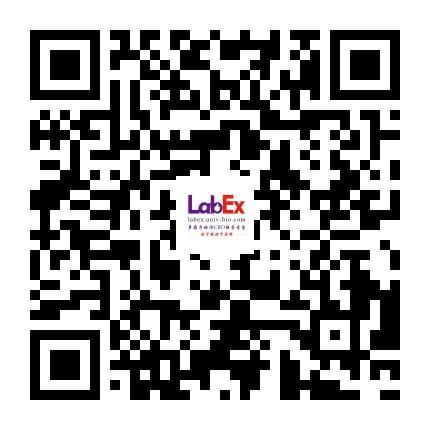Hypoxia-induced release, nuclear translocation, and signaling activity of a DLK1 intracellular fragment in glioma
Glioblastoma multiforme is characterized in part by severe hypoxia associated with tumor necrosis. The cellular response to hypoxia can influence several properties of tumor cells associated with aggressive tumor growth, including metabolic adaptations and tumor cell migration and invasion. Here, we found that Delta Like Non-Canonical Notch Ligand 1 (DLK1) expression was elevated as compared with normal brain in a genetically engineered mouse model of glioma, and that DLK1 expression increased with tumor grade in human glioma samples. DLK1 expression was highest in hypoxic and perivascular tumor areas, and we found that hypoxia induced the release and nuclear translocation of an intracellular fragment of DLK1 in murine glioma as well as in human glioma cultures. Release of the intracellular fragment was dependent on ADAM17 and Hypoxia-inducible Factor 1alpha and 2alpha (HIF-1alpha/HIF-2alpha), as ADAM17 inhibitors and HIF1A/HIF2A siRNA blocked DLK1 cleavage. Expression of a cleavable form of DLK1 amplified several hypoxia-induced traits of glioma cells such as colony formation, stem cell marker gene expression, a PI3K-pathway-mediated metabolic shift, and enhanced invasiveness. Effects of DLK1 were dependent on DLK1-cleavage by ADAM17, as expression of non-cleavable DLK1 could not replicate the DLK1-induced hypoxic phenotype. Finally, forced expression of DLK1 resulted in more invasive tumor growth in a PDGFB-induced glioma mouse model without affecting overall survival. Together, our findings suggest a previously undescribed role for DLK1 as an intracellular signaling molecule.- Oncogene
- 8
- 2020 May;39(20):4028-4044.
- Mouse
- 抗体芯片
- 神经系统
- 神经系统
- 其它细胞
- 胶质瘤
- AFP,ErbB4,MMP-2,Amphiregulin,FGF basic,MMP-3,Angiopoietin-1,FoxC2,MMP-9,ANGPTL4,FKHR,MSP/MST1,ENPP-2/Autotaxin,Galectin-3,MUC-1,AXL,GM-CSF,Nectin-4,BCL-X,HCG,Osteopontin,CA125/MUC-16,HGF R/c-Met,p27/Kip1,E-Cadherin,HIF-1alpha,p53,VE-Cadherin,HNF-3beta,PDGF-AA,CAP-G,HO-1/HMOX1,CD31/PECAM-1,CA-9,ICAM-1/CD54,Progesterone R,Cathepsin B,CD25/IL-2 R alpha,Progranulin,Cathepsin D,IL-6,Prolactin,Cathepsin S,CXCL8/IL-8,Prostasin,CEACAM-5,IL-18 Bpa,E-Selectin,Decorin,KLK-3/PSA,Maspin,DKK-1,KLK-5,PAI-1/Serpin E1,DLL-1,KLK-6,SNAIL,EGF R/ErbB1,Leptin (OB),SPARC,Endoglin/CD105,Lumican,Survivin,Endostatin,CCL2/MCP-1,Tenascin-C,Enolase 2,CCL8/MCP-2,THBS-1,eNOS,CCL7/MCP-3,TIE-2,EpCAM,M-CSF,UPA-1,ER-alpha,Mesothelin,VCAM-1,ErbB2,CCL3/MIP-1alpha,VEGF,ErbB3,CCL20/MIP-3alpha,Vimentin
相关货号
LXAM084-1LXAH041-1
Abstract
Glioblastoma multiforme is characterized in part by severe hypoxia associated with tumor necrosis. The cellular response to hypoxia can influence several properties of tumor cells associated with aggressive tumor growth, including metabolic adaptations and tumor cell migration and invasion. Here, we found that Delta Like Non-Canonical Notch Ligand 1 (DLK1) expression was elevated as compared with normal brain in a genetically engineered mouse model of glioma, and that DLK1 expression increased with tumor grade in human glioma samples. DLK1 expression was highest in hypoxic and perivascular tumor areas, and we found that hypoxia induced the release and nuclear translocation of an intracellular fragment of DLK1 in murine glioma as well as in human glioma cultures. Release of the intracellular fragment was dependent on ADAM17 and Hypoxia-inducible Factor 1alpha and 2alpha (HIF-1alpha/HIF-2alpha), as ADAM17 inhibitors and HIF1A/HIF2A siRNA blocked DLK1 cleavage. Expression of a cleavable form of DLK1 amplified several hypoxia-induced traits of glioma cells such as colony formation, stem cell marker gene expression, a PI3K-pathway-mediated metabolic shift, and enhanced invasiveness. Effects of DLK1 were dependent on DLK1-cleavage by ADAM17, as expression of non-cleavable DLK1 could not replicate the DLK1-induced hypoxic phenotype. Finally, forced expression of DLK1 resulted in more invasive tumor growth in a PDGFB-induced glioma mouse model without affecting overall survival. Together, our findings suggest a previously undescribed role for DLK1 as an intracellular signaling molecule.
金课堂之文献解析 文献原文请点击
本网站销售的所有产品及服务均不得用于人类或动物之临床诊断或治疗,仅可用于工业或者科研等非医疗目的。







 沪公网安备31011502400759号
沪公网安备31011502400759号
 营业执照(三证合一)
营业执照(三证合一)


